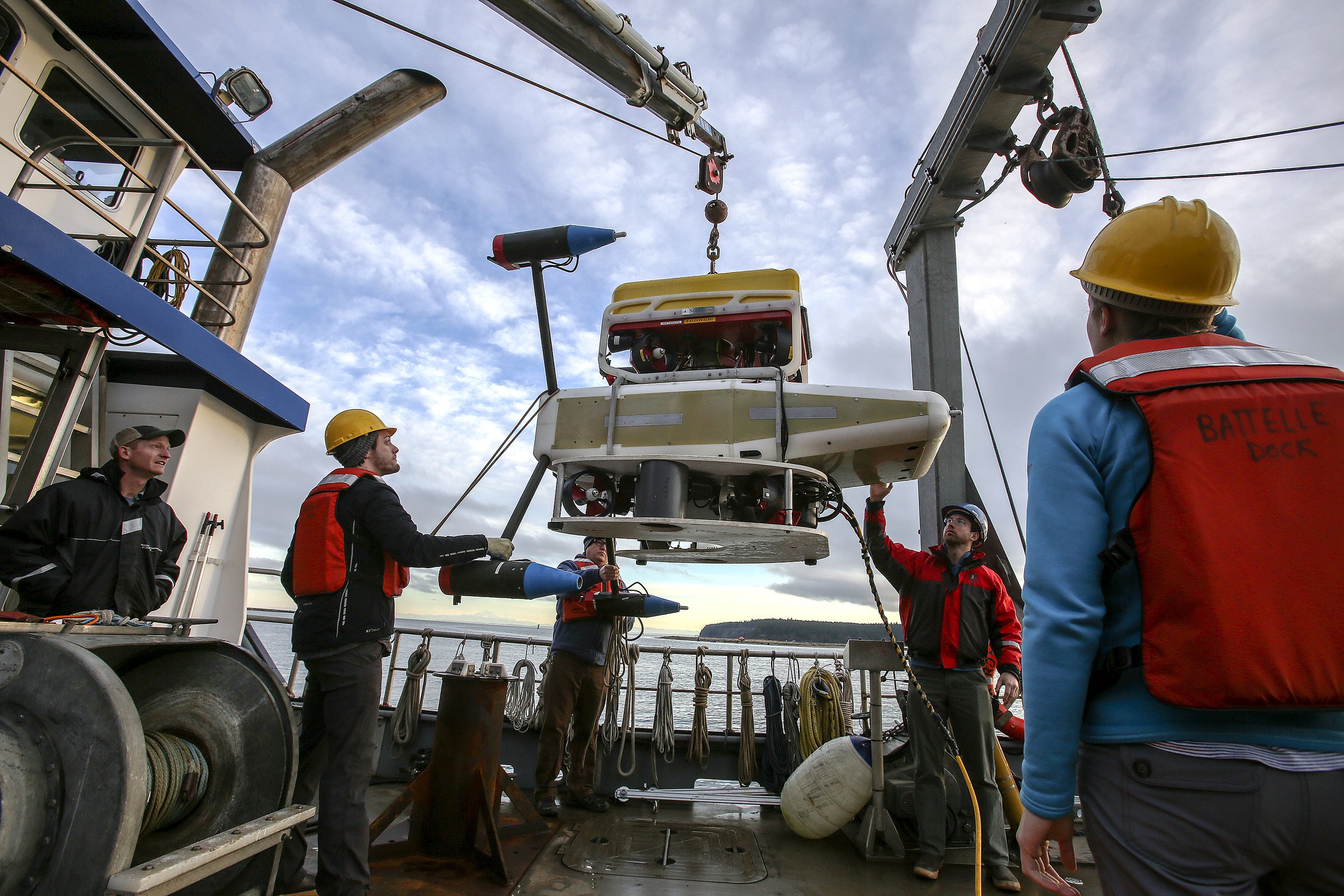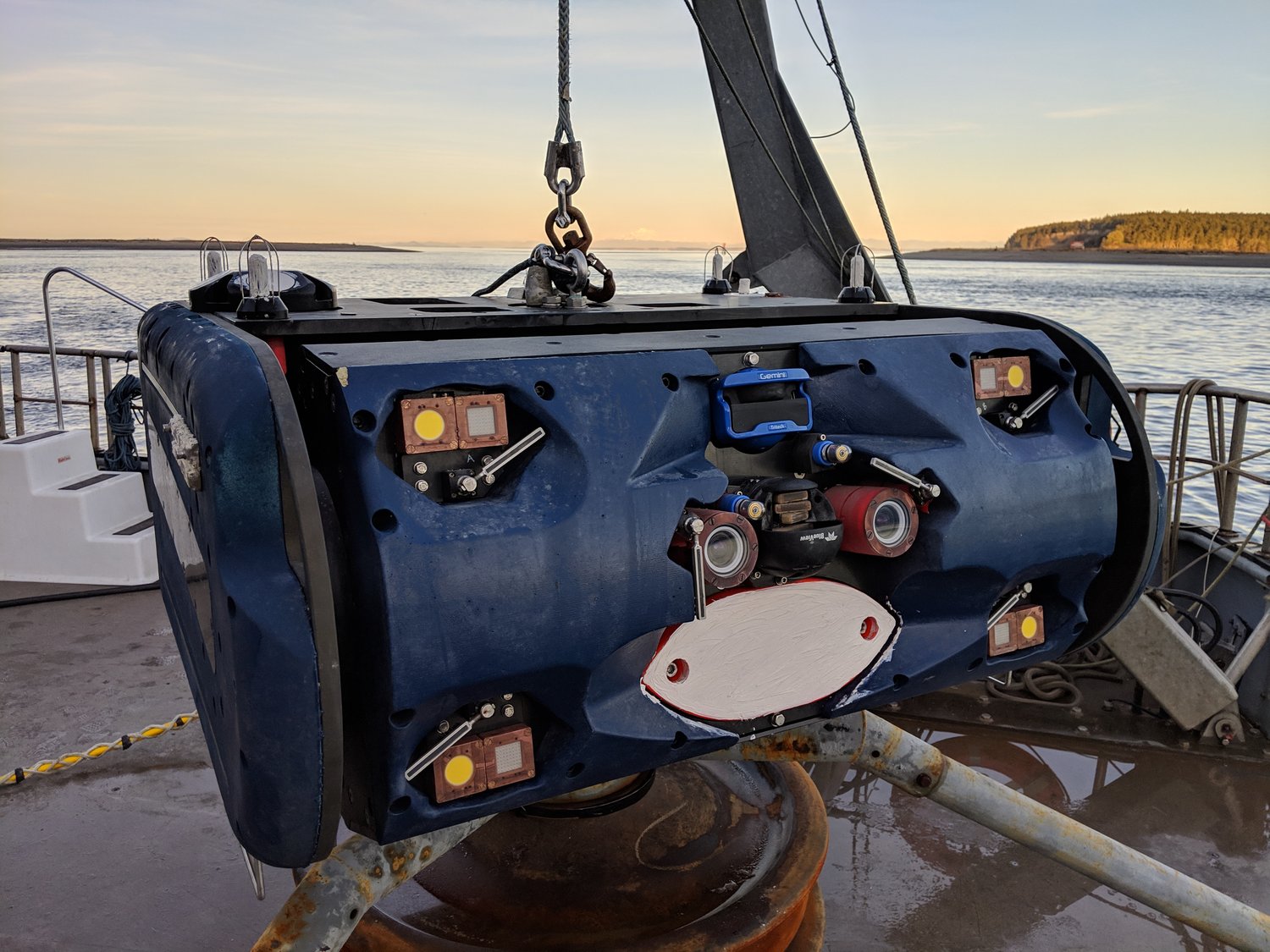|
||||||||||||||||||||||||||||||||||||||||||
|
||||||||||||||||||||||||||||||||||||||||||
Deep Learning making waves in underwater applications
|
MarineSitu
using Machine Vision and AI to monitor underwater installations
for sustainability
|
|
Founded in Seattle, USA, (2017) MarineSitu is a company that specialises in the development of integrated machine vision cameras for monitoring marine life and underwater environments. MarineSitu's initial focus was on creating technology to monitor conditions around devices like wave energy converters and underwater turbines that are used in the emerging renewable marine energy sector known as the "blue economy." The blue economy relates to sustainable development of marine resources. President and Founder, James Joslin says that MarineSitu's systems are being used for different underwater applications. An example is installations that track and counts fish at several hydroelectric facilities, which will help inform fisheries management of fish populations migrating up rivers.
Most cameras that perform underwater applications, often mounted on underwater drones or ROV's, are limited by the duration they can stay deployed. After just a few months submerged, underwater systems are required to be brought up to the surface for cleaning and maintenance. Joslin says they were interested in designing a system that would be capable of spending years deployed underwater due to the nature of the application. "Monitoring marine energy devices requires long-term continuous monitoring in order to catch potentially rare events, such as marine mammal interactions with tidal turbines," Joslin says. The primary target for their technology was the blue energy industry. To achieve this, MarineSitu designed a system that comprises two main components: hardware and software. The hardware includes Machine Vision Cameras from Allied Vision, ruggedized housings, lighting systems, and controllers. The cameras used are Allied Vision's Alvium GigE cameras (5Gigabit bandwidth, 34.1MP, and 464 FPS) that are fitted into specialized housings designed for prolonged underwater applications. These housings are mainly constructed with plastic as they must be resistant to corrosion. They also incorporate Kowa LM5JCM lenses and include features like mechanical wipers to maintain lens clarity.
When asked, James Joslin answered "We chose these cameras and lenses after doing a review of machine vision systems for a combination of factors including the high level of configuration control that they offer, their low-light sensitivity, the broad range of resolution and frame rate, as well as their compact size." In the gloomy depths lighting and visibility are key challenges. Another reason why MarineSitu chose the Alvium Camera, Joslin said, was due to its I/O capabilities and ability to synchronize with up to eight LED lights per camera which are strobed. The low LED light duty cycle in this design minimises the effect of bright lighting on the surrounding marine environment. "Our hardware is specifically developed for long-term deployments and has been demonstrated with over 4 years in the water. Compared to other similar hardware on the market it is also significantly lower cost," Joslin says. The camera equipment and hardware that MarineSitu have elected to use has proved to be very successful and able to withstand long-periods of deployment underwater. A system in Oahu, Hawaii, has now been in-place and operating successfully for over 20-months. MarineSitu's system digitizes data collected by the Alvium camera via an ethernet connection over fibre, with a fibre optic cable connected to a land-based data processor. Ethernet Fibre optic cabling provides reliable and fast transmission over long distances. Having solved
the issues associated with capturing and collecting high quality
machine vision data in underwater environments MarineSitu turned
their attention to the second part of the system, being software
and the task of monitoring the environment. The project began
with people working around the clock monitoring a computer screen
in six-hour shifts counting fish. Using human-power to monitor
24/7 was extremely labour intensive, resource draining, and presented
the need for an automated software solution. Joslin says that MarineSitu has now implemented its vision system across various locations in the United States and has plans for growth in the immediate future. For more information
about this system, Allied Vision Cameras, Kowa Lenses or advice
on how to design a Machine Vision system contact
Adept Turnkey's machine vision experts. |
|
If you like this page, please recommend and share it. |
|||
| More | |||





